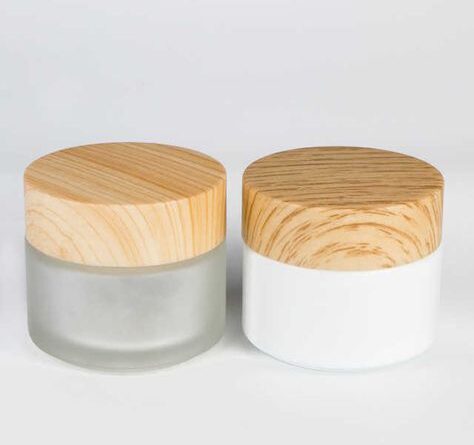The Evolution of Cream Jar Packaging: From Functionality to Luxury in Skincare Branding
In the fast-paced world of skincare, packaging has evolved from a functional necessity to a key driver of luxury branding. While often overlooked, the design and materials behind cream jar packaging play an important role in shaping a brand’s image and influencing consumer behavior. The Cream jar is no longer a mere vessel for products; it is an embodiment of quality, exclusivity, and environmental sustainability – an evolution that is today an integral part of the skincare product experience. Packaging in the cosmetic industry has transformed into a strategic asset that complements the product itself.
A Historical Perspective: The Core is Functionality
In the early days of skincare packaging, functionality was the first and foremost consideration. Cream jars were crafted with one goal: to store and protect the product. Materials such as tin, simple glass, and basic plastic were commonly used to house creams, lotions, and balms. They were designed with a focus on practicality and were simple and straightforward —these containers were meant to keep products safe and give customers easy access to the product.
Labels, often minimal, included the name of the product and its purpose but little else. Functionality was the cornerstone of packaging design, and aesthetics took a backseat. Consumers weren’t concerned with the packaging itself—they wanted a quality product that was easy to use and lasted long enough for them to reap its benefits.
However, as the beauty industry grew, so did consumer expectations. As the demand for higher-quality skincare increased, so did the need for more sophisticated packaging to match the advanced formulations inside. The cream jar was elevated from a container to a critical component in delivering a superlative customer experience.
The Rise of Premium Materials: A Shift Toward Luxury
The next phase in the evolution of cream jar packaging saw the introduction of premium materials, marking the transition from purely functional to luxurious. Glass, acrylic, and even ceramic began to replace cheaper, less durable options. These materials offered a tactile sense of quality while providing better protection for the delicate skincare formulations.
Frosted glass, for example, became a hallmark of premium skincare products. Its soft texture and opacity exude sophistication while serving the functional purpose of protecting the contents from harmful UV rays, which can degrade certain ingredients. Similarly, the introduction of double-walled acrylic jars introduced sleek, modern aesthetics, with the added benefit of maintaining a lightweight yet durable design.
Brands began using these premium materials to reinforce the perception of quality and luxury. The aesthetic appeal of high-end materials, combined with their functional advantages, helped elevate the skincare product itself, making the packaging an integral part of the overall brand experience.
Design Innovations: Where Art Meets Science
As skincare branding evolved, so did the design of the cream jar. It became clear that packaging wasn’t just about protection—it was about creating a visual identity and an emotional connection with the consumer. Today’s luxury skincare brands invest heavily in design, using packaging to communicate sophistication, exclusivity, and innovation.
Gone are the days of basic containers with minimal design. Now, intricate elements like embossed logos, metallic accents, and unique color palettes are common features on luxury skincare jars and bottles. The materials themselves are often sculpted into innovative shapes, with attention to detail that makes the jar itself feel like a work of art.
Moreover, the functionality of these designs has also evolved. Airless jars, for instance, became a popular solution for high-end skincare products. These glass cream jars preserve the efficacy of sensitive ingredients by using closures that prevent oxidation and product degradation by limiting product exposure to air. In addition to their functional advantages, airless jars further offer an elevated user experience—giving consumers a sense of luxury with every use.
With the rise of technology in design, some brands are incorporating smart packaging features like QR codes on jars, providing consumers with information about the product’s sourcing, its ingredients, or instructions on how to recycle. These innovations signal that cream jar packaging is no longer just a visual element but a tool to engage with the customer at the time of purchase and continue the dialogue thereafter, merging art with science to provide more than just aesthetics.
Emotional Connection: Packaging as a Sensory Experience
Skincare brands have come to realize that packaging is their conduit to creating an emotional connection with consumers. Luxury packaging isn’t just about looking good on the shelf—it’s about crafting an experience that resonates with the consumer on a deeper level. For many high-end skincare products, the experience begins the moment the consumer touches the jar.
The weight of the jar, the smoothness of the glass, and the sound of the glass cream jar’s airtight lid opening and closing all contribute to a heightened sense of luxury. Even the unboxing experience has been meticulously curated, with layers of tissue paper, velvet pouches, and branded outer boxes designed to make the consumer feel special. These small but significant details turn the act of purchasing and using skincare into a ritual, heightening the emotional appeal and a sense of exclusivity.
This sensory experience doesn’t stop at the cream jar or bottle; instead, it extends to the product’s performance and the results it imparts. When consumers buy a premium skincare product, they are buying more than just a formula—they are purchasing an experience that begins with the jar and lasts through their routine. This shift has been pivotal in the rise of luxury skincare and reinforces the importance of packaging in building long-term brand loyalty.
Sustainability: The New Luxury
In recent years, sustainability has become a key focus in the skincare industry, and cream jar packaging is no exception. With increasing consumer awareness of the environmental impact of their purchases, many luxury skincare brands have begun to prioritize eco-friendly packaging options. Brands are exploring more and more ways to respond to increasing demand from customers for sustainable solutions. Some of the options that are being used include recyclable glass, biodegradable materials, and refillable eco-friendly cream jars for beauty products.
However, sustainability presents a unique challenge for luxury brands. The brands are working hard to explore innovative solutions to strike the delicate balance between maintaining high-end aesthetics and ensuring eco-friendliness. Refillable jars are good, but they need to provide the same premium look and feel as their single-use counterparts, all the while offering consumers the convenience and environmental benefits of reuse.
Sustainability becomes an additional give for brands that successfully navigate this challenge adding another layer to the sense of luxury. Consumers who care about the planet also want products that align with their values, and a brand that can offer both elegance and eco-consciousness elevates its status even further.
The Role of Technology: A Glimpse Into the Future
Technology is going to play an even more significant role in revolutionizing the packaging in the personal care industry. For instance, augmented reality (AR) is making its way into packaging with the intent to provide an immersive purchase experience. Scanning a jar with a smartphone will give consumers a view of behind-the-scenes, interesting anecdotes on how the product came to be on the shelf, use of the product, ingredient information, and even virtual try-ons, enhancing their overall connection with the brand. An experience that can be accommodated as well for large packaging as for small cream jars for face creams and moisturizers.
3D printing is enabling brands to push the boundaries of design by allowing for custom cream jars and unique cream jar packaging solutions, opening the door to limited-edition products and personalized jars that cater to niche markets, providing consumers with a level of exclusivity that was once unattainable.
Conclusion: Packaging a Strategic Asset
Personal care packaging is evolving from a functional necessity to a deliverer of customer experience, impacting a shift in consumer behavior and skincare branding.
Cosmetic Packaging is no longer an afterthought—it has become an essential part of the overall product experience, serving as a powerful tool for differentiation in a crowded market.
As skincare brands continue to innovate, the future of cream jar packaging will likely combine luxury, functionality, and sustainability in even more seamless ways. For consumers, this means experiencing skincare products that not only deliver quality but also offer a sophisticated, sensory experience from the first touch to the final application.
Nitin Chaudhary
.



